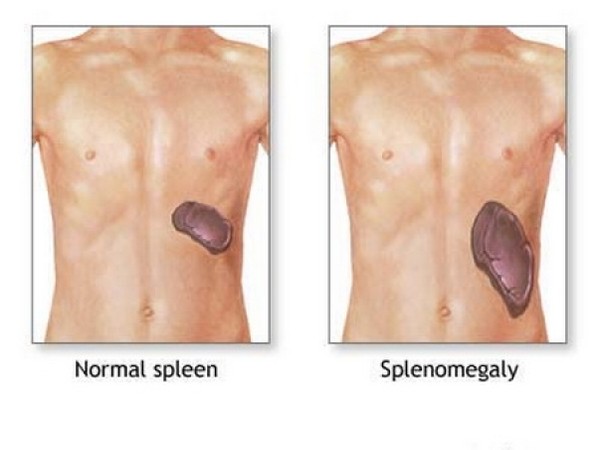Splenomegaly Causes, Symptoms, Diagnosis and Treatment

What is Splenomegaly?
Splenomegaly is an enlargement of the spleen.
Splenomegaly is one of the four cardinal signs of hypersplenism which include;
- Some reduction in the number of circulating blood cells affecting granulocytes,
- Erythrocytes or platelets in any combination
- A compensatory proliferative response in the bone marrow
- The potential for correction of these abnormalities by splenectomy
Treatment for an enlarged spleen focuses on relieving the underlying condition. Surgically removing an enlarged spleen isn’t usually the first treatment, but it may be recommended in certain situations.
Causes of Splenomegaly:
A number of infections and diseases can contribute to an enlarged spleen.
Factors which play a role include:
- Viral infections
- Mononucleosis
- Bacterial infections,
- Syphilis
- An infection of the heart’s inner lining (endocarditis)
- Parasitic infections
- Cirrhosis and other diseases affecting the liver
- Various types of hemolytic anemia
- Blood cancers
- Leukemia
- Lymphomas
- Hodgkin’s disease
- Metabolic disorders
- Gaucher’s disease
- Niemann-Pick disease
- Pressure on the veins in the spleen or liver or a blood clot in these veins
The following groups are at a higher risk of developing splenomegaly:
- Children and young adults with infections, such as mononucleosis
- People who live in or travel to areas where malaria is endemic
Symptoms of Splenomegaly:
Generally, splenomegaly does not cause any symptoms.
However, in case it does, the following symptoms may be exhibited:
- Pain or fullness in the left upper abdomen that may spread to the left shoulder
- Feeling full without eating or after eating only a small amount — this can occur when an enlarged spleen presses on the stomach
- Anemia
- Fatigue
- Frequent infections
- Easy bleeding
- Chest pain
- A palpable left upper quadrant abdominal mass or splenic rub
Diagnosis of Splenomegaly
Splenomegaly can be diagnosed by conducting the following tests and exams:
- Physical exam
- Blood tests, such as a complete blood count to check the number of red blood cells, white blood cells and platelets in the patient’s system
- Ultrasound or computerized tomography (CT) scan to help determine the size of the spleen and whether it’s crowding other organs
- Magnetic resonance imagining (MRI) to trace blood flow through the spleen
Treatment of Splenomegaly:
Treatment of splenomegaly tends to focus on the underlying cause of the condition.
In case of absence of symptoms, doctors may recommend watchful waiting.
If an enlarged spleen causes serious complications or the underlying problem can’t be identified or treated, surgical removal of the spleen (splenectomy) may be an option.
Patients undergoing splenectomy should be vaccinated against Haemophilus influenzae, Streptococcus pneumoniae, and Meningococcus. They should also receive annual influenza vaccinations. Long-term prophylactic antibiotics may be given in certain cases.
By : Natural Health News




